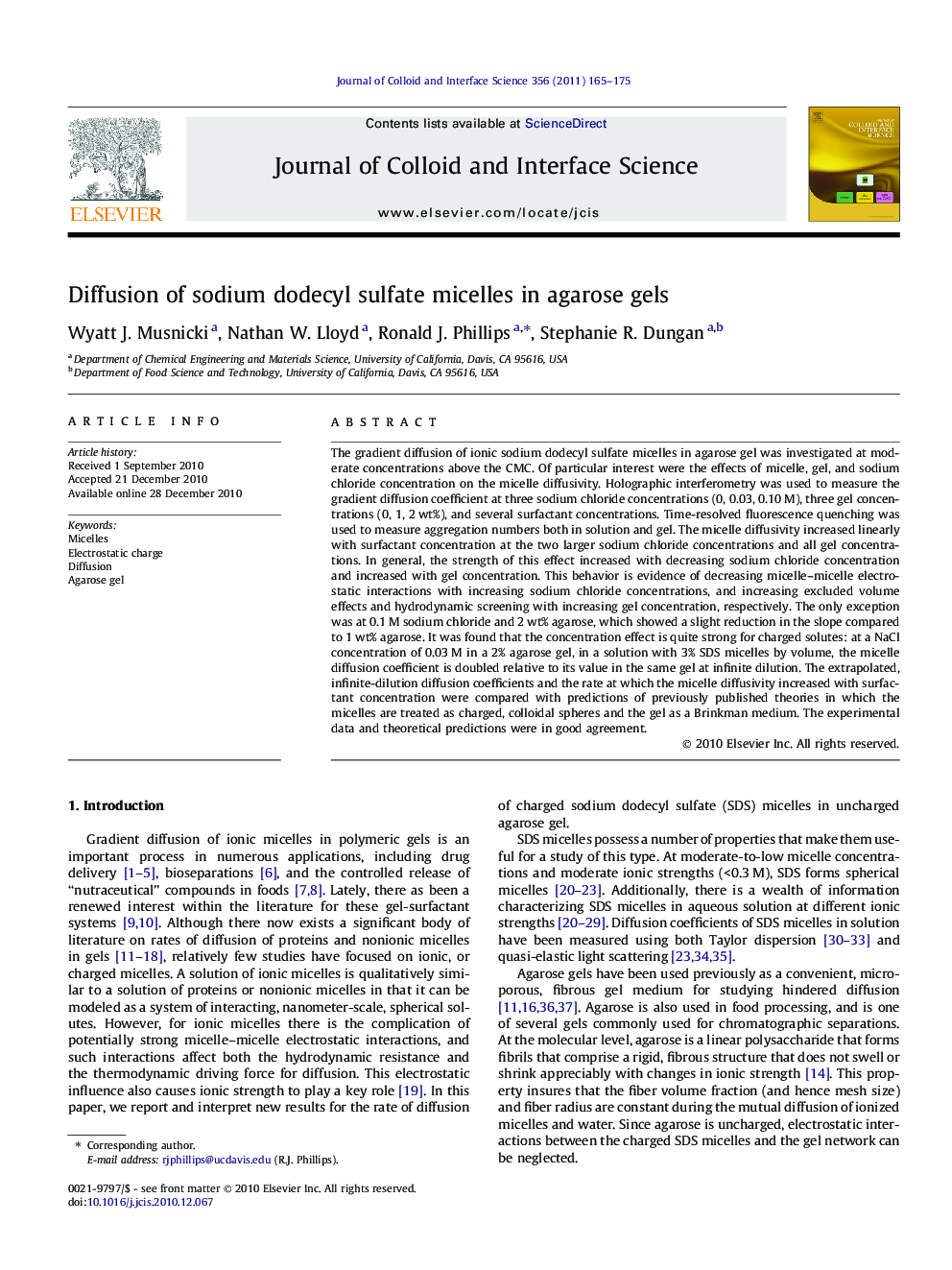| Article ID | Journal | Published Year | Pages | File Type |
|---|---|---|---|---|
| 608718 | Journal of Colloid and Interface Science | 2011 | 11 Pages |
The gradient diffusion of ionic sodium dodecyl sulfate micelles in agarose gel was investigated at moderate concentrations above the CMC. Of particular interest were the effects of micelle, gel, and sodium chloride concentration on the micelle diffusivity. Holographic interferometry was used to measure the gradient diffusion coefficient at three sodium chloride concentrations (0, 0.03, 0.10 M), three gel concentrations (0, 1, 2 wt%), and several surfactant concentrations. Time-resolved fluorescence quenching was used to measure aggregation numbers both in solution and gel. The micelle diffusivity increased linearly with surfactant concentration at the two larger sodium chloride concentrations and all gel concentrations. In general, the strength of this effect increased with decreasing sodium chloride concentration and increased with gel concentration. This behavior is evidence of decreasing micelle–micelle electrostatic interactions with increasing sodium chloride concentrations, and increasing excluded volume effects and hydrodynamic screening with increasing gel concentration, respectively. The only exception was at 0.1 M sodium chloride and 2 wt% agarose, which showed a slight reduction in the slope compared to 1 wt% agarose. It was found that the concentration effect is quite strong for charged solutes: at a NaCl concentration of 0.03 M in a 2% agarose gel, in a solution with 3% SDS micelles by volume, the micelle diffusion coefficient is doubled relative to its value in the same gel at infinite dilution. The extrapolated, infinite-dilution diffusion coefficients and the rate at which the micelle diffusivity increased with surfactant concentration were compared with predictions of previously published theories in which the micelles are treated as charged, colloidal spheres and the gel as a Brinkman medium. The experimental data and theoretical predictions were in good agreement.
Graphical abstractHolographic interferometry interferometry is used to measure the effect of concentration on diffusion of charged micelles in agarose. A strong effect is found, particularly at low ionic strengths. The data are in good agreement with a theory for concentration effects on the thermodynamic driving force and hydrodynamic resistance to micellar flux.Figure optionsDownload full-size imageDownload high-quality image (139 K)Download as PowerPoint slideResearch highlights► Solute interactions affect diffusion rate. ► Electrostatic charge enhances interactions. ► Gel fibers crowd solute by excluding volume. ► Charged micelle diffusion in gels strongly dependent on concentration.
